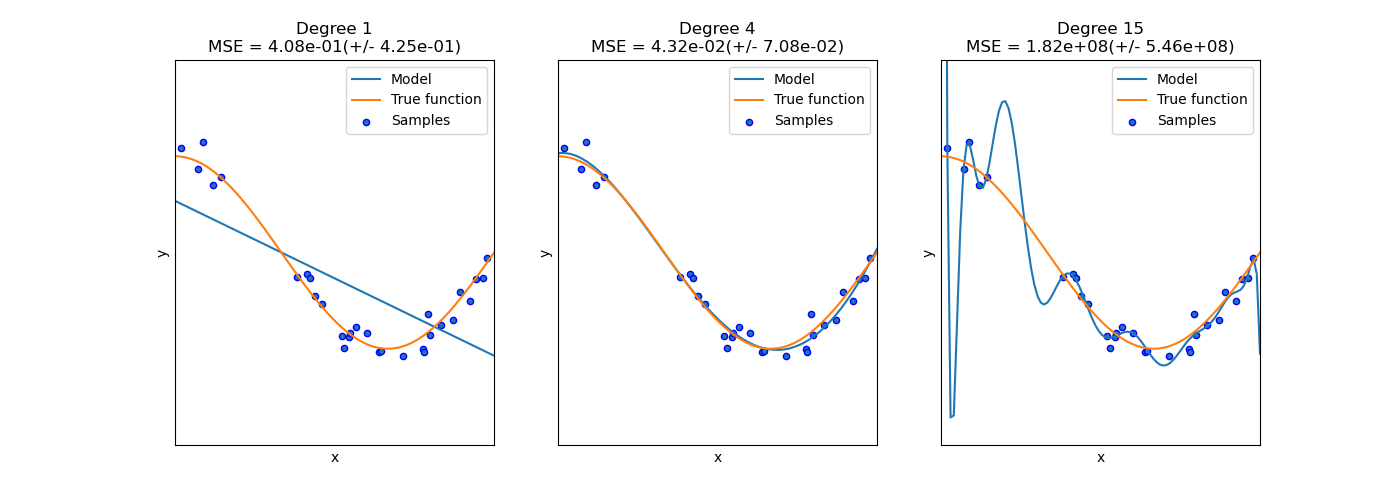欠拟合与过拟合¶
此案例展现了拟合不足和拟合过度的问题,以及如何使用具有多项式特征的线性回归来估计非线性函数。该图显示了我们要估计的函数,它是余弦函数的一部分。 此外,还将显示来自真实函数的样本以及不同模型的近似值。这些模型具有不同程度的多项式特征。我们可以看到线性函数(阶数为1的多项式)不足以拟合训练样本。 这称为欠拟合。4次多项式几乎完美地逼近了真实的函数。但是,对于较高的次数,模型将过度拟合训练数据,即模型会学习训练数据的噪声。我们通过使用交叉验证来定量评估过度拟合/不足拟合。我们在验证集上计算均方误差(MSE),该误差越高,模型从训练数据正确拟合、学到真实函数的可能性就越小。

print(__doc__)
import numpy as np
import matplotlib.pyplot as plt
from sklearn.pipeline import Pipeline
from sklearn.preprocessing import PolynomialFeatures
from sklearn.linear_model import LinearRegression
from sklearn.model_selection import cross_val_score
def true_fun(X):
return np.cos(1.5 * np.pi * X)
np.random.seed(0)
n_samples = 30
degrees = [1, 4, 15]
X = np.sort(np.random.rand(n_samples))
y = true_fun(X) + np.random.randn(n_samples) * 0.1
plt.figure(figsize=(14, 5))
for i in range(len(degrees)):
ax = plt.subplot(1, len(degrees), i + 1)
plt.setp(ax, xticks=(), yticks=())
polynomial_features = PolynomialFeatures(degree=degrees[i],
include_bias=False)
linear_regression = LinearRegression()
pipeline = Pipeline([("polynomial_features", polynomial_features),
("linear_regression", linear_regression)])
pipeline.fit(X[:, np.newaxis], y)
# Evaluate the models using crossvalidation
scores = cross_val_score(pipeline, X[:, np.newaxis], y,
scoring="neg_mean_squared_error", cv=10)
X_test = np.linspace(0, 1, 100)
plt.plot(X_test, pipeline.predict(X_test[:, np.newaxis]), label="Model")
plt.plot(X_test, true_fun(X_test), label="True function")
plt.scatter(X, y, edgecolor='b', s=20, label="Samples")
plt.xlabel("x")
plt.ylabel("y")
plt.xlim((0, 1))
plt.ylim((-2, 2))
plt.legend(loc="best")
plt.title("Degree {}\nMSE = {:.2e}(+/- {:.2e})".format(
degrees[i], -scores.mean(), scores.std()))
plt.show()
脚本的总运行时间:(0分钟0.229秒)




